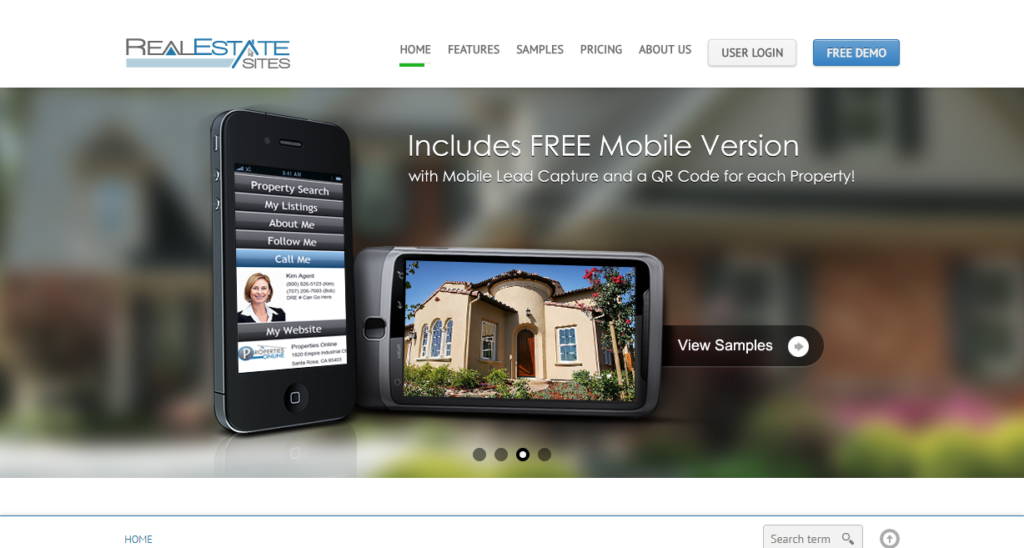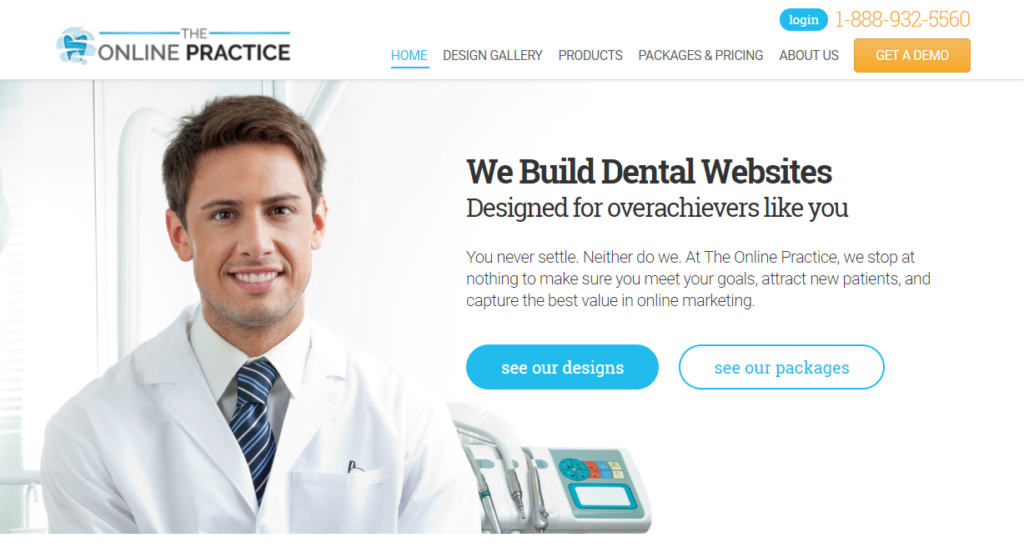This is a big question I hear a lot.
How much should I charge for my turnkey websites?
And like most questions about pricing, there’s no right answer.
“But Matt,” you might be saying, “the right answer is ‘you should charge enough to be profitable.'”
Normally, yes. But the reality is that it’s hard to figure out what profitable means in a business model that’s built on monthly recurring revenue, a lot of work up-front, and only minimal upkeep and support over time. The profit wont come until after you launch and by then you’ll have already set your prices.
Instead of thinking about profitability, I like to think of three things when setting the price for something like this:
- The “market rate” for similar solutions.
- The amount of automation involved.
- The unique value your solution brings to the table.
Let’s dig in to each item from the list above.
What’s the Going Rate for Turnkey Websites?
The first item we must consider is how similar services are being priced. We’re not the first to offer turnkey website solutions. There are plenty solutions out there. If there are none in your niche, there are probably some in a similar niche that you can compare to.
Let’s take a look at a few turnkey systems that are out there and see how they’re pricing their offerings. For the sake of this comparison I’ll be looking at turnkey services that offer websites to a particular niche. Not the one-size-fits-all folks like Squarespace or Wix. Also keep in mind that we’re looking for automated solutions that don’t provide custom design and little to no manual set-up.
Zenfolio ($5 – $30/month)

On the low end of the spectrum we have photographer-focused offering Zenfolio. They provide an all-in-one e-commerce platform for photographers to display and sell their photos.
The lower tier offers just a basic DIY website template to showcase photos while the higher plans start adding more e-commerce and marketing features.
They understand most photographers are operating on a low budget and may even be doing this as a hobby. As such the folks at Zenfolio created a basic offering that gets the job done at an affordable price.
Real Estate Sites ($30 – $65/month + $100-200 set-up fee)

A more mid-level offering is something like Real Estate Sites. These guys offer websites for real estate agents that connect to popular housing databases like IDX.
Real Estate Sites employ a few interesting pricing strategies. First of all, they offer a free tier. This is a strategy I have mixed feeling about that I’ll explore in a future post. Secondly, they require a one-time set-up fee that varies depending on the tier of service. This helps cover the cost if the initial set-up of the website is not completely automated, while still allowing them to keep the monthly ongoing cost lower.
The Online Practice ($40 – $200/month)

On the higher end we have an offering like The Online Practice that caters to dentists. Note that the “higher” end of the spectrum still starts at a mere $40. From there it moves up quickly to the higher package tiers which offer things like SEO, content writing, and a basic CRM.
Dentists are a very specific industry with unique marketing needs. That’s why these guys can charge more. However the entry level price is still very affordable compared to a custom website build.
Lessons Learned
The first thing you probably noticed is that these prices are a far cry from the prices most web developers are used to charging. I typically charge a least $5k to build a custom website for clients of my consulting business as I’m sure many of you do too. Not to mention ongoing maintenance for those clients starts at $99/mo.
But that’s not the goal here. I’ve already talked about the myth that you can’t make a profit off of low-budget clients, and those type of clients are the exact clients we’re targeting here.
It’s worth noting that the services above are targeting a very specific niche for their turnkey website solution. They offer items in their packages that speak directly to their target client and offer solutions to their unique problems. This kind of targeting will allow you to sell a lot more of your turnkey websites. That’s because your potential clients will see that you’re solving their specific pains.
Finally, you can see that there are creative ways to add additional value and earn more money from each client. Real Estate Sites does it by requiring an additional set-up fee. The Online Practice does it by offering basic marketing add-ons. I do it in my own service by offering concierge add-ons like blog post writing and SEO. The initial low price tier is just a gateway into your ecosystem. Once your clients are in there and they see the value of your offering, they’re much more likely to move up to a higher tier in the future.
Automate All The Things
The amount of automation you choose to implement in your system is another big factor in how you will determine your pricing.
The goal of your turnkey operation should be to automate as much as possible and put control of the website into your customer’s hands. This is the key to scaling your service to hundreds and possibly even thousands of users.
Some examples of things you can automate include:
- Purchasing – Users should be able to purchase a website like they do any other online product…with the click of a button.
- Set-up – Once they buy, their website can be made available instantly via WordPress Multisite and plugins like Restrict Content Pro’s Site Creation add-on.
- On-boarding – Using videos and wizards you can walk your new customers through the steps they’ll need to take to complete their website.
- Training – Providing good training (videos are best) will help your clients benefit from your expertise and improve their website without ever needing to work with you directly.
- Content creation – Provide “starter” content that fits the client niche already available when they sign up. It gives them a good blueprint to then write their own content. Plus it makes the website usable right out of the gate, in case the customer doesn’t have time to add their own content.
- Support – Automating support is the hardest part of the puzzle, but you can get close by building a robust FAQ/Knowledge base of solutions to common problems.
- Add-ons and up-sells – Just like the initial purchase of the website, the add-ons and up-sells you provide should be as easy as filling out a form and clicking a button. Then you can easily create systems to pass on to a VA or contractor to complete the manual work. Avoid client meetings, or anything that requires intense creative input from you.
The more of these things you automate means less ongoing work that you need to do and the lower your price can be. This translates to scalability, which is the key to making this whole thing profitable.
What Makes Your Solution So Special?
This is the part that can really start to move the needle for your pricing. What is it about your solution that’s different than all the other options out there?
Sure, you’re making it easy for your target customer to get a website up and running, but what else?
Are you providing access to a suite of plugins that are hand selected for their niche? Plugins that would normally cost hundreds of dollars if purchased separately?
Are you providing a time-tested website design built for conversions?
Are you offering a library of content and images that save your customers time and money from trying to find those things on their own?
Each of these extra features should allow you to add a bit more on to your “price formula”.
But make sure these add-ons are unique to your product and your niche. Things like page builders, SSL, domain mapping, and basic SEO are built in to every other offering out there. You can’t charge more for that stuff.
Look for unique opportunities to add value. Some good examples include:
- Training videos tailored to your niche about how to market the website.
- eCommerce functionality set-up specifically to sell the products that your target clients would sell.
- Schema markup specific to your client’s industry.
- Conversion optimization items like pre-built lead magnets, opt-in forms, and landing pages.
Really think outside of the box here and look to solve the specific pains that your target niche has with their websites. But don’t forget to make it easy for the client to implement so you can avoid those support tickets.
More Product, Less Service
It’s important to think of a turnkey website solution as less of a service and more of a product. It’s best to price it like a SaaS (software as a service), because that’s essentially what it is.
The benefits of a SaaS to customers is that they can have access to a top-tier piece of software for a low monthly fee. And the benefits of a SaaS to the vendor is that they can continue to get paid to update and support their software, while only creating it once.
The same benefits apply to a turnkey website business. Your clients can enjoy a quality website for a predictable low monthly fee, and you only have to build it once. It’s a a business model that’s ripe for quick growth and scale.
In order to enjoy that growth and scale though, you will need to carefully consider the pricing of your offering. Once you find the sweet spot you’ll enjoy an ever-increasing flow of recurring revenue that’s hard to find any other way.
What are your thoughts on pricing? Will you change your approach after reading this article? Let us know in the comments below.

Awesome post Matthew. I started in the web industry with a niche (but not so much turnkey) then that industry flourished because of a booming market place and with that, ‘no pain no need’ for a hum dinger website.
For the past 10 years I’ve delivered all industry sites, as we mostly do.
Ironically, about 6 months ago I revisited the idea of niche turnkey websites but was thinking multiple niches.
I’ve always gad care plans and know well the value of the subscription model. Bit scary the concept or idea of either a no setup or low setup fee but can see the merit.
Hmm, now you’ve got me thinking.
Nice article Matt. What e-commerce solutions do you recommend for a turnkey website system? What do think about ecwid, woo or EDD.
Thanks Orlando! ecommerce on turnkey is not something I have much experience with. However, I recommend going with the simplest solution possible, and make sure you test that it works on multisite. I generally like EDD because of it’s simplicity, but it really depends on the needs of your customers.
I agree was thinking the same thing about EDD. THANKS – Keep up the good work.